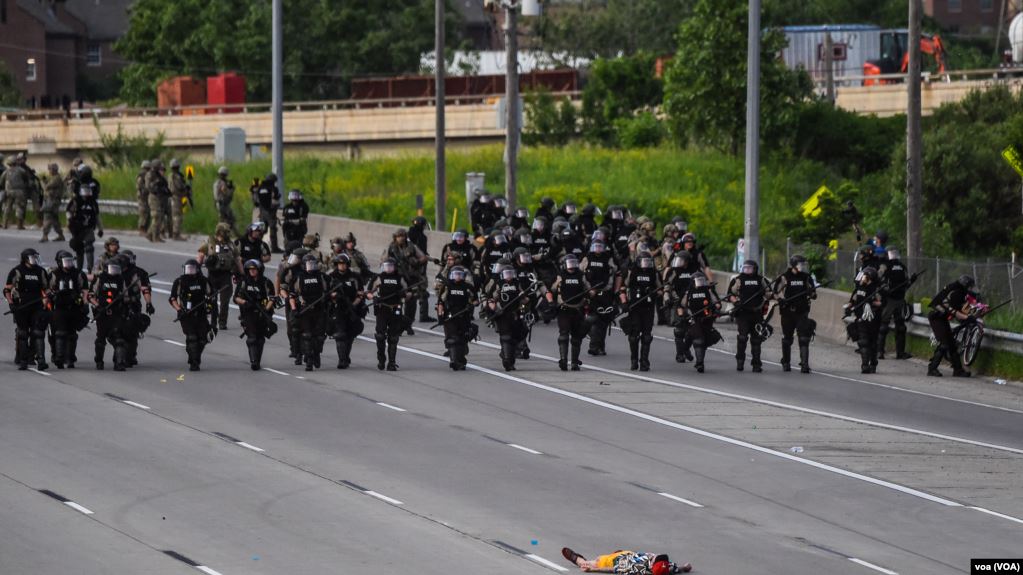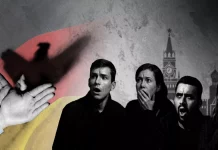
By Polygraph
Donald Trump
U.S. President
“The United States of America will be designating ANTIFA as a Terrorist Organization.”
Source: Twitter, May 31, 2020
MISLEADING
Protests erupted in the city of Minneapolis, Minnesota, on May 25 after the video the arrest and death of African American George Floyd spread across social platforms and the news media.
Peaceful demonstrations in cities across the country sometimes turned violent and destructive, with buildings and vehicles crashed and on fire from Texas to California and even Washington, D.C.
In Minnesota, the state authorities initially blamed the violence on “outside” radical extremist groups – a claim that media reports contradicted, citing police arrest data that included mostly locals.
Then, on Sunday, President Donald Trump weighed in on Twitter with a post citing the far-left, loosely organized anarchist group “antifa” (short for anti-fascist) as instigator of the violence.
“The United States of America will be designating ANTIFA as a Terrorist Organization,” Trump tweeted on Sunday.
The statement is misleading.
While the law allows the United States to designate foreign groups as terrorists, providing the imposition of sanctions, there is no parallel domestic terrorism law to authorize such a designation.
Instead, cases of alleged domestic terrorism are typically investigated as criminal matters under other federal and state laws. The Justice Department and FBI also work in conjunction with state and local law enforcement as part of Joint Terrorism Task Forces.
Trump’s tweet prompted wide debate – with critics questioning his authority to make such a designation and others claiming it really didn’t matter, since there were plenty of laws that applied.
It also sparked debate about the nature of antifa – an “organization” with no leaders and members who often group in small cells with the shared goals of being disruptive and anti-authoritarian.
Although thought of in the U.S. as a domestic group, antifa has members who identify with the cause worldwide. In Canada, antifa expanded as a movement against the far-right and white supremacy. “Antifa is not a group,” one member of the movement told the Jesuit Review in a 2018 article. “It is an objective.”
In the U.S., Trump and allies have tried to associate antifa with the radical left. Attorney General William Barr, in a pair of statements over the weekend, first said, “In many places, it appears the violence is planned, organized and driven by anarchistic and far-left extremists, using Antifa-like tactics.”
“The violence instigated and carried out by Antifa and other similar groups in connection with the rioting is domestic terrorism and will be treated accordingly,” he added the next day, echoing Trump.
Neither the Justice Department, the FBI nor the White House has provided direct evidence of that antifa incited any of the violence. Some reports have suggested right-wing groups could be involved. In Pittsburgh, Pennsylvania, authorities identified a young white animal-rights activist as an alleged instigator.
“The truth is, nobody really knows,” Keith Ellison, Minnesota’s Democratic attorney general said on NBC’s “Meet the Press.”
The president’s supporters say the Patriot Act, passed after the 9/11 terror attacks by al Qaida in New York City, Washington and Pennsylvania, defines domestic terrorism and could provide grounds to designate antifa a terrorist organization. The act states that:“the term “domestic terrorism” means activities that—(A) involve acts dangerous to human life that are a violation of the criminal laws of the United States or of any State;(B) appear to be intended—(i) to intimidate or coerce a civilian population;(ii) to influence the policy of a government by intimidation or coercion; or(iii) to affect the conduct of a government by mass destruction, assassination, or kidnapping; and(C) occur primarily within the territorial jurisdiction of the United States;”
Others argue that a designation is beside the point.
“There is no need to designate a domestic insurrectionist group as a terrorist organization, because there is an extensive panoply of laws, at the state and federal level, by which such groups can be investigated, prosecuted, and otherwise thwarted,” Andrew McCarthy, a former assistant U.S. attorney wrote June 1 in the National Review.
McCarthy led the prosecution of perpetrators of the 1993 World Trade Center bombing, a case that played out before the 1996 law that allowed for designating foreign terror organizations.
“The lack of a designation process did not matter a whit. Because the jihadists’ plotting and attacks took place on U.S. soil, the full scope of U.S. law applied to all their activities,” McCarthy wrote.
A proposed amendment to the U.S. anti-terrorism law to specifically target antifa was proposed in 2018 but stalled in the U.S. Congress.
The issue surfaced again last year after a white supremacist gunned down 20 people at a Walmart in El Paso, Texas. He left a manifesto complaining of a “Hispanic invasion.” The president of the FBI Agents Association called on Congress to make domestic terrorism a crime to “ensure that F.B.I. agents and prosecutors have the best tools to fight domestic terrorism.”
The American Civil Liberties Union and other rights groups have been suspicious of such a law and the potential for abuse. Even former prosecutor McCarthy says such a law could be problematic.
“Since we already have a slew of criminal laws for investigating terrorists, the only point of such a designation would be to permit the surveillance of Americans in the absence of probable cause that they have committed crimes,” he wrote. Still, “We should absolutely treat Antifa as a terrorist organization.”
Trump’s critics noted that antifa can’t really be described as an “organization” because it has no official leadership or hierarchy.
A 2017 intelligence assessment by the Department of Homeland Security and the FBI describes antifa as a network of coordinated cells organized for “domestic terrorist violence.”
Historian Mark Bray of Rutgers University is author of “Antifa: The Anti-Fascist Handbook.” Writing in the Washington Post on Monday, June 1, Bray said Trump’s characterizations of antifa “intentionally misrepresent the anti-fascist movement in the interest of delegitimizing militant protest and deflecting attention away from the white supremacy and police brutality that the protests oppose.”
“But antifa itself,” Bray wrote, “is not an overarching organization with a chain of command, as Trump and his allies have been suggesting. Instead, largely anarchist and anti-authoritarian antifa groups share resources and information about far-right activity across regional and national borders through loosely knit networks and informal relationships of trust and solidarity.”
It should be noted that Bray, in an earlier Washington Post op-ed published in 2017, described antifa as “a radical pan-leftist politics of social revolution applied to fighting the far right,” whose adherents “are predominantly communists, socialists and anarchists who reject turning to the police or the state to halt the advance of white supremacy.”
Whatever the true nature of antifa, the Trump administration is blaming it for the wave of rioting in U.S. cities.
Asked on CNN about the violence and property destruction, Trump’s new national security adviser, Robert O’Brien, said: “This is being driven by Antifa. Whatever they are, they’re — they’re militants who are coming in and burning our cities, and we’re going to get to the bottom of it.”
On Monday evening, Trump in the Rose Garden called on mayors and governors to use “overwhelming law enforcement presence” to put down violent protests. Shortly after, a phalanx of officers with shields and helmets fired rubber bullets and used tear gas to move peaceful protesters away from a church near the White House.
Trump then walked to the church with Barr and other officials and posed for cameras while raising a Bible.
By Polygraph




